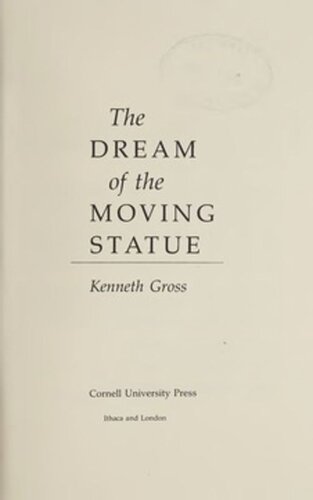

Most ebook files are in PDF format, so you can easily read them using various software such as Foxit Reader or directly on the Google Chrome browser.
Some ebook files are released by publishers in other formats such as .awz, .mobi, .epub, .fb2, etc. You may need to install specific software to read these formats on mobile/PC, such as Calibre.
Please read the tutorial at this link: https://ebookbell.com/faq
We offer FREE conversion to the popular formats you request; however, this may take some time. Therefore, right after payment, please email us, and we will try to provide the service as quickly as possible.
For some exceptional file formats or broken links (if any), please refrain from opening any disputes. Instead, email us first, and we will try to assist within a maximum of 6 hours.
EbookBell Team

4.0
86 reviewsThe fantasy of a sculpture that moves, speaks;or responds, a statue that comes to life as an oracle, lover, avenger, mocker, or monster—few images are more familiar or seductive. The living statue appears in ancient creation narratives, the myths of Pygmalion and Don Juan, lyric poetry from the Greek Anthology to Rilke, and romantic fairy tales; it is a recurrent theme in ballet and opera, in philosophy, psychoanalysis, and film. What does it mean for the statue that stands immobile in gallery or square to step down from its pedestal or speak out of its silence? What is it in this fantasy that animates us?
Kenneth Gross explores the implications of fictive statues in biblical and romantic narrative; in the poetry of Ovid, Michelangelo, Blake, Rilke, and Stevens; in the drama of Shakespeare; in the writings of Freud and Wittgenstein. He also considers their place in the poetry of such contemporaries as Richard Howard and the films of Charlie Chaplin, Frarn;ois Truffaut, and Peter Greenaway. In the motif of the moving statue, we can see how the reciprocal ambitions of writing and sculpture play off each other, often producing deeply paradoxical figures of life and voice, Stories of the living statue point to the uncertain ways in which our desires, fantasies, and memories are bound to the realm of unliving objects. Clarifying the sources of our fascination with real and imaginary statues, this book asks us to reconsider some of our most basic assumptions about the uses of fantasy and fiction.
Eloquent and evocative, The Dream of the Moving Statue will capture and hold a wide audience.